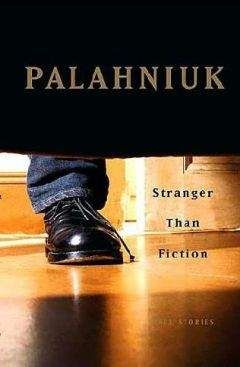Or not. Every year on the itemized Schedule C of my tax return, I deduct more money for new copies of Hempel's three books, Reasons to Live, At the Gates of the Animal Kingdom, and Tumble Home. Every year, you want to share these books. What happens is they never come back. Good books never do. This is why my office shelves are crowded with nonfiction too gross for most people, mostly forensic autopsy textbooks, and a ton of novels I hate.
At a bar in New York last year, the literary bar KGB in the East Village, Hempel told me her first book is out of print. The only copy I know of is behind glass in the Powell's rare book room, a first-edition hardcover selling for $75, without a signature.
I have a rule about meeting the flesh-and-blood version of people whose work I love. That rule I'm saving for the end.
Unless Hempel's books are reprinted, I may end up spending more, or making fewer friends. You cannot not push these books on people, saying, "Read this," saying, "Is it just me, or did it make you cry, too?"
I once gave Animal Kingdom to a friend and said, "If you don't love this, we have nothing in common."
Every sentence isn't crafted, it's tortured over. Every quote and joke, what Hempel tosses out comedian-style, is something funny or profound enough you'll remember it for years. The same way, I sense, Hempel has remembered it, held on to it, saved it for a place where it could really shine. Scary jewelry metaphor, but her stories are studded and set with these compelling bits. Chocolate-chip cookies with no bland cookie "matrix," just nothing but chips and chopped walnuts.
In that way, her experience becomes your experience. Teachers talk about how students need to have an emotional breakthrough, an "ah-hah!" discovery moment in order to retain information. Fran Lebowitz still writes about the moment she first looked at a clock and grasped the concept of telling time. Hempel's work is nothing but these flashes, and every flash makes you ache with recognition.
Right now, Tom Spanbauer's teaching another batch of students by photocopying "The Harvest" from his old copy of The Quarterly, the magazine edited by Gordon Lish, the man who taught minimalism to Spanbauer and Hempel and Richard. And, through Tom, to me.
At first, "The Harvest" looks like a laundry list of details. You have no idea why you're almost weeping by the end of seven pages. You're a little confused and disoriented. It's just a simple list of facts presented in the first person, but somehow it adds up to more than the sum of its parts. Most of the facts are funny as hell, but at the last moment, when you're disarmed by laughter, it breaks your heart.
She breaks your heart. First and foremost. That evil Amy Hempel. That's the first bit Tom teaches you. A good story should make you laugh, and a moment later break your heart. The last bit is you will never write this well. You won't learn this part until you've ruined a lot of paper, wasting your free time with a pen in one hand for years and years. At any horrible moment, you might pick up a copy of Amy Hempel and find your best work is just a cheap rip-off of her worst.
To demonstrate minimalism, students sit around Spanbauer's kitchen table for ten weeks taking apart "The Harvest."
The first aspect you study is what Tom calls "horses." The metaphor is-if you drive a wagon from Utah to California, you use the same horses the whole way. Substitute the word «themes» or «choruses» and you get the idea. In minimalism, a story is a symphony, building and building, but never losing the original melody line. All characters and scenes, things that seem dissimilar, they all illustrate some aspect of the story's theme. In "The Harvest," we see how every detail is some aspect of mortality and dissolution, from kidney donors to stiff fingers to the television series Dynasty.
The next aspect Tom calls "burnt tongue." A way of saying something, but saying it wrong, twisting it to slow down the reader. Force the reader to read close, maybe read twice, not just skim along a surface of abstract images, short-cut adverbs, and clichés.
In minimalism, clichés are called "received text."
In "The Harvest" Hempel writes: "I moved through the days like a severed head that finishes a sentence." Right here, you have her «horses» of death and dissolution and her writing a sentence that slows you to a more deliberate, attentive speed.
Oh, and in minimalism, no abstracts. No silly adverbs like "sleepily," "irritably," "sadly," please. And no measurements, no feet, yards, degrees, or years old. The phrase "an eighteen-year-old girl," what does that mean?
In "The Harvest," Hempel writes: "The year I began to say vahz instead of vase, a man I barely knew nearly accidentally killed me."
Instead of some dry age or measurement, we get the image of someone just becoming sophisticated, plus there's burnt tongue, plus she uses her «horse» of mortality.
See how these things add up?
What else you learn about minimalism includes "recording angel." This means writing without passing judgment. Nothing is fed to the reader as «fat» or "happy." You can only describe actions and appearances in a way that makes a judgment occur in the reader's mind. Whatever it is, you unpack it into the details that will reassemble themselves within the reader.
Amy Hempel does this. Instead of telling us the boyfriend in "The Harvest" is an asshole, we see him holding a sweater soaked with his girlfriend's blood and telling her, "You'll be okay, but this sweater is ruined."
Less becomes more. Instead of the usual flood of general details, you get a slow drip of single-sentence paragraphs, each one evoking its own emotional reaction. At best, she's a lawyer who presents her case, exhibit by exhibit. One piece of evidence at a time. At worst, she's a magician, tricking people. But reading, you always take the bullet without being told it's coming.
So, we've covered «horses» and "burnt tongue" and "recording angel." Now, writing "on the body."
Hempel shows how a story doesn't have to be some constant stream of blah-blah-blah to bully the reader into paying attention. You don't have to hold the reader by both ears and ram every moment down their throat. Instead, story can be a succession of tasty, smelly, touchable details. What Tom Spanbauer and Gordon Lish call "going on the body," to give the reader a sympathetic physical reaction, to involve the reader on a gut level.
The only problem with Hempel's palace of fragments is quoting it. Take any piece out of context, and it loses power. The French philosopher Jacques Derrida likens writing fiction to a software code that operates in the hardware of your mind. Stringing together separate macros that, combined, will create a reaction. No fiction does this as well as Hempel's, but each story is so tight, so boiled to bare facts, that all you can do is lie on the floor, face down, and praise it.
My rule about meeting people is-if I love their work, I don't want to risk seeing them fart or pick their teeth. Last summer in New York I did a reading at the Barnes & Noble on Union Square where I praised Hempel, telling the crowd that if she wrote enough, I'd just stay home and read in bed all day. The next night, she appeared at my reading in the Village. I drank half a beer and we talked without passing gas.
Still, I kind of hope I never see her again. But I did buy that first edition for $75.
It's almost midnight in Marilyn Manson's attic.
This is at the top of a spiral staircase where the skeleton of a seven-foot-tall man, the bones black with age, crouches, his human skull replaced by a ram's skull. He's the altarpiece from an old Satanic church in Britain, Manson says. Next to the skeleton is the artificial leg a man pulled off himself and gave to Manson after a concert. Next to that is the mullet wig from the movie Joe Dirt.
This is at the end of ten years' work. It's a new start. The alpha and the omega for this man who's worked a decade to become the most despised, the most frightening artist in music. As a coping skill. A defense mechanism. Or just out of boredom.
The walls are red, and as Manson sits on the black carpet, shuffling Tarot cards, he says, "It's hard to read yourself."
Somewhere, he says, he's got the skeleton of a seven-year-old Chinese boy, disassembled and sealed in plastic bags.
"I think I might make a chandelier out of it," he says.
Somewhere is the bottle of absinthe he drinks despite the fear of brain damage.
Here in the attic are his paintings and the working manuscript for his new book, a novel. He brings out the designs for a new deck of Tarot cards. It's him on almost every card. Manson as the Emperor, sitting in a wheelchair with prosthetic legs, clutching a rifle, with the American flag hung upside down behind him. Manson as the headless Fool, stepping off a cliff with grainy images of Jackie O in her pink suit and a JFK campaign poster in the background.
"It was a matter of reinterpreting the Tarot," he says. "I replaced the swords with guns. And Justice is weighing the Bible against the Brain."
He says, "Because each card has so many different symbols, there is a real magic, ritual element to it. When you shuffle, you're supposed to transfer your energy to the cards. It sounds kind of hokey. It's not something I do all the time. I like the symbolism much more than the trying to rely on divination.
"I think a reasonable question would be, 'What's next? " he says, about to deal the cards and begin his reading. "More specific, 'What's my next step?»
Manson deals his first card: the Hierophant
"The first card that you put down," Manson says, looking at the upside-down card, "this represents wisdom and forethought, and the fact that I just dealt it upside down could mean the opposite-like a lack. I could be naive about something. This card is, right now, my direct influence."
This reading takes place after Rose McGowen's left the house they share in the Hollywood Hills. After Manson and McGowen played with their Boston terriers, Bug and Fester, and she showed him a catalogue with the Halloween costumes she wants to order for the dogs. She talks about the "Boston Tea Party," where hundreds of people parade their Boston terriers around an L.A. park. They talk about how they rented a 1975 powder-blue Cadillac limo-the only rental available-to drive out to some snow-bound farm in the Midwest where they bought two of the terriers for Manson's parents.
Her car and driver are outside, waiting. She's catching a red-eye flight to Canada, where she's making a movie with Alan Alda. In the kitchen, a monitor shows views from the different security cameras, and McGowen talks about how different Alan Alda looks, how big his nose is. Manson tells her how, as men grow older, their nose and ears and scrotum keep growing. His mom, a nurse, talked about old men whose balls hung halfway down their legs.
Manson and McGowen kiss goodbye.
"Thanks a lot," she says. "Now when I work with Alan Alda, I'll be wondering how big his scrotum is."
In the attic, Manson deals his second card: Justice
"This could be referring to my judgment," he says, "my ability to discern, possibly with friendships or business dealings. Right now this is representing where I'm at. I feel a little naive or unsure about either friendships or business dealings, which does particularly apply to certain circumstances between me and my record company. So that makes every bit of sense."
The day before, in the offices of his record label on Santa Monica Boulevard, Manson sat on a black leather sofa, wearing black leather pants, and whenever he shifted, the leather-on-leather made a deep growl sound, amazingly similar to his voice.
"I tried to swim when I was a kid, but I could never deal with the water in my nose. I have a fear of the water. I don't like the ocean. There's something too infinite about it that I find dangerous."
The walls are dark blue and there are no lights on. Manson sits in this dark-blue room with the air conditioning blasting, drinking cola and wearing sunglasses.
"I guess I have a tendency to like to live in places where I don't really fit. I started out in Florida, and maybe that made me not fit. That was the thing that drove me to like and be attracted to everything opposite of my surroundings, because I didn't like the beach culture."
He says, "I used to just like to look. When I didn't know anybody and I first moved to Florida, I'd sit and I'd watch people. Just listen to conversations and observe. If you intend to create something that people will observe and listen to, you've got to listen to them first. That's the key to it."
At home, in the attic of his five-story house, drinking a glass of red wine, Manson deals his third card: the Fool
"The third card is to represent my goals," he says, the leather-rubbing-leather sound in his voice. "The Fool is about to walk off of a cliff, and it's a good card. It represents embarking on a journey, or taking a big step forward. That could represent the campaign of the record coming out or going on tour now."
He says, "I have a fear of crowded rooms. I don't like being around a lot of people, but I feel very comfortable onstage in front of thousands of people. I think it's a way of dealing with that."
His voice is so deep and soft, it disappears behind the rush of the air conditioning.
"I am very shy, strangely enough," he says, "and that's the irony of being an exhibitionist, being up in front of people. I'm really very shy.
"I like to sing alone, too. The least amount of people are involved whenever I'm singing. When I'm recording, sometimes I'll make them hit record and leave the room."
About touring, he says, "The threat of death makes it all worth living, makes it all exciting. That's the ultimate relief of boredom. Being right in the middle of it all. I thought, 'I know that I'm going to have to take things to such an extreme to get my points across that I'm going to start at the bottom and make myself the most despised person. I'm going to represent everything that you're against and you can't say anything to hurt me, to make me feel any worse. I only have up to go. I think that was the most rewarding, to feel like there's nothing you can do to hurt me. Aside from killing me. Because I represent the bottom. I'm the worst that it gets, so you can't say that I did something that makes me look bad, because I'm telling you right now that I'm all of it. It was very liberating to not have to worry about how people are going to try and knock you down.
"If you don't like my music, I don't care. It doesn't really matter to me. If you don't like what I look like, if you don't like what I have to say, it's all part of what I'm asking for. You're giving me just what I want."
Manson deals his fourth card: Death
"The fourth card is your distant past," he says. "And the Death card most represents transition, and it's part of what has got you to this, how you are right now. This makes a good deal of sense, regarding the fact that I've just gone through such a grand transition that's taken place over the course of the last ten years."





